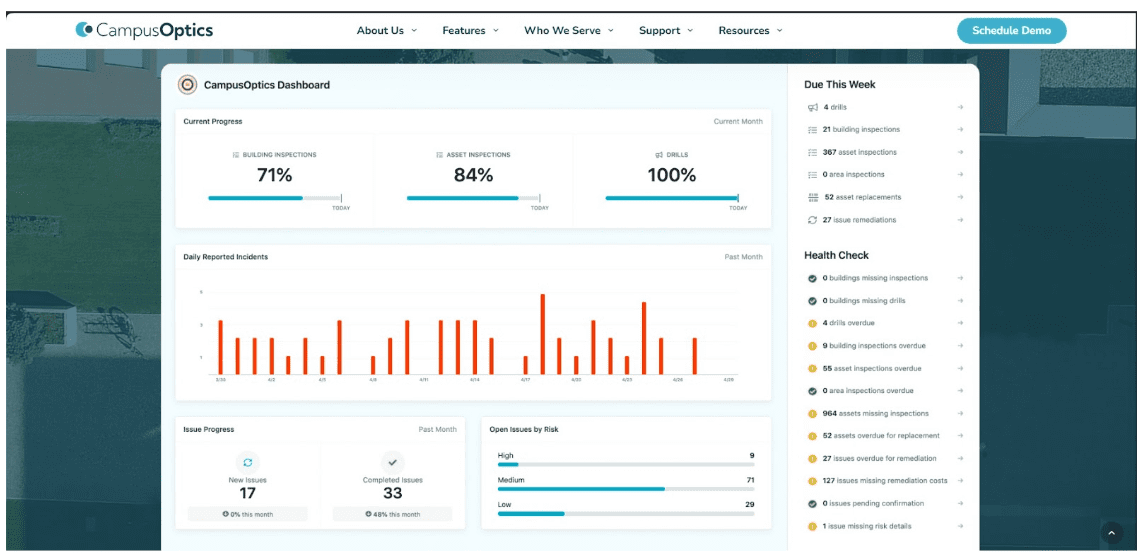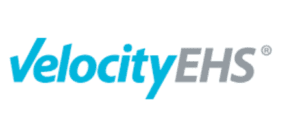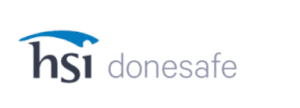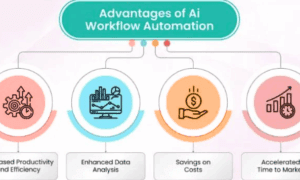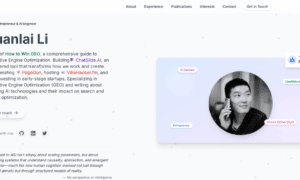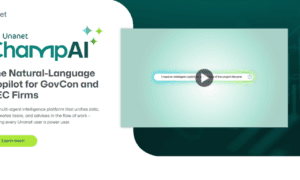Keeping track of safety incidents used to mean endless spreadsheets, email chains, and lost reports. Thankfully, those days are fading fast. Modern EHS incident management software helps teams catch issues early, stay compliant, and build safer workplaces without drowning in paperwork. These tools go beyond basic reporting – they turn incident data into insights that actually make a difference.
In this article, we’ll look at some of the best EHS incident management platforms trusted by organizations in manufacturing, education, healthcare, and beyond. Each one brings its own way of simplifying how safety teams log events, analyze trends, and prevent future risks. Whether you’re managing one site or an entire network of facilities, there’s a solution here designed to fit how you work.
1. CampusOptics
CampusOptics isn’t just another EHS software platform. It was built specifically for higher education, and honestly, that makes all the difference. The whole thing started after a tragic campus fire took the lives of three students – one of the founders’ close friends. That experience shaped everything about how this platform works and why it exists.
Today, CampusOptics helps colleges and universities get a handle on the complex safety landscape across labs, dorms, lecture halls, and everything in between. Think chemical inventory, hazardous waste tracking, permit approvals, fire inspections, safety drills, and yes – incident reporting – all in one centralized system. It’s built for collaboration, so whether you’re in EHS, facilities, or risk management, everyone can access the same real-time data without digging through outdated spreadsheets or paper forms.
Key Highlights:
- Purpose-built for colleges and universities
- Incident reporting via web or mobile
- Tracks chemical inventory, permits, and inspections
- Includes emergency pre-plans and training dashboards
- Designed with cross-departmental collaboration in mind
Services:
- Incident logging and investigation tracking
- Fire and life safety inspections
- Chemical and hazardous material inventory
- Safety training assignment and tracking
- Compliance calendar and permit management
- Emergency plan documentation and sharing
Contact Information:
- Website: www.campusoptics.com
- App Store: apps.apple.com/ua/app/campusoptics/id1608207767
- Google Play: play.google.com/store/apps/details?id=com.campusoptics.app&pcampaignid
- Address: 7951 Shoal Creek Blvd., Suite 275 Austin, TX 78757
- Phone Number: (888)748-7652
- Email: contact@campusoptics.com
2. VelocityEHS
VelocityEHS offers a platform that helps teams stay on top of incidents without getting buried in forms and fragmented systems. Their software makes it easier to log, track, and follow up on safety events by pulling everything together into one space. Whether it’s a near miss, a reported hazard, or a full-blown incident, the system is set up to help safety professionals respond quickly and keep things from slipping through the cracks.
The incident management tools are built into a larger EHS platform that includes chemical safety, ergonomics, operational risk, and more. Teams can adjust workflows to match how they actually operate, which cuts down on manual work and reduces delays. With built-in AI features and dashboards, people can spot trends and handle issues before they grow into bigger problems.
Key Highlights:
- Platform combines incident tracking with risk, compliance, and safety
- Workflows can be adjusted to fit how your team works
- Supports follow-up actions and root cause analysis
- AI tools help surface trends and patterns
- Designed to reduce response time and improve visibility
Services:
- Incident reporting and investigation
- Corrective and preventive action tracking
- Risk analysis and operational safety tools
- Chemical and contractor safety modules
- Real-time dashboards and reporting features
3. HSI Donesafe
HSI Donesafe takes a modular approach to EHS software, so companies can start with what they need and add more over time. Their incident management tools are designed for real-world use—quick to access, simple to update, and flexible enough to handle everything from minor incidents to complex investigations. It’s meant to be used by everyone, not just the safety team.
The system connects safety events with other areas like quality control, supplier oversight, and ESG tracking. That means when something goes wrong, it’s easier to understand the broader context and figure out what to fix. With custom workflows, multilingual support, and automation built in, HSI Donesafe helps teams spend less time digging through reports and more time focusing on what needs to be done.
Key Highlights:
- Built to be used by workers across departments, not just admins
- Modular setup lets you scale up over time
- Supports multilingual environments and mobile access
- Real-time views of key safety data
- Dashboards are easy to customize and share
Services:
- Workplace incident and injury management
- Return-to-work coordination tools
- ESG and sustainability reporting
- Quality and supplier event tracking
- Automated alerts and custom analytics
4. KPA
KPA provides software that helps organizations handle incidents as they happen, not after the fact. Their incident management tools are designed to get important safety information moving quickly through the system. Reports can be submitted via mobile devices, and notifications are sent right away to the right people. It’s meant to support a faster response and give managers the context they need to make decisions without delay.
The platform includes features like near-miss reporting and flexible workflows, which help teams stay proactive about identifying risks before they become actual incidents. Everything is built to encourage consistent reporting and to make sure the right steps are followed, from submission through resolution. The tools are not overloaded with features most people never use, but instead focus on speed, clarity, and day-to-day usability.
Key Highlights:
- Mobile-friendly incident reporting
- Real-time alerts and notification system
- Near-miss tracking to spot issues early
- Customizable workflows for investigations
- Supports both minor and serious incident tracking
Services:
- Incident submission and review tools
- Corrective action tracking
- Safety data dashboard
- Near-miss reporting
- Integration with other EHS tools
5. EcoOnline
EcoOnline offers incident management features as part of a wider EHS platform. Their tools are built around centralized, real-time data that gives teams a clearer view of what’s happening on the ground. The system helps capture incidents quickly and links them with other safety data, which can be useful for spotting patterns or gaps in safety practices. Reports can be submitted with QR codes, and dashboards show live updates, so teams aren’t guessing when they need to take action.
One of the main ideas behind EcoOnline’s platform is making safety reporting easier for end-users so adoption doesn’t become a barrier. That means simple forms, straightforward workflows, and the ability to adapt dashboards without a developer. It’s more about making the process smoother than adding layers of features people won’t use. Their setup gives managers the tools to analyze incidents, follow up, and improve processes without going through a complicated system.
Key Highlights:
- Live data dashboards for real-time updates
- QR code access for quick reporting
- Simple user interface across devices
- Flexible dashboard setup without coding
- Designed to support high adoption across teams
Services:
- Incident logging with mobile access
- Live reporting and trend tracking
- Dashboard customization
- Data export and compliance support
- Integrated EHS and chemical safety tools
6. Ultimo
Ultimo approaches incident management as part of a broader asset and safety platform. While their main focus is on enterprise asset management, their system includes tools for logging, tracking, and following up on incidents that occur during maintenance or operations. Safety and maintenance data are connected, so if something goes wrong with an asset, the incident can be documented alongside its service history or operational details.
The idea is to keep everything in one place so that teams don’t lose time chasing down disconnected data. The interface is built to be easy for teams to use without needing extensive training. Incident workflows can be adjusted to reflect how work actually gets done on the ground, and the system helps ensure that the steps following an incident are logged, assigned, and completed without relying on manual follow-up.
Key Highlights:
- Incident tools connected to asset data
- Customizable workflows based on real-life tasks
- Clear interface designed for field teams
- Supports both safety and operational reporting
- Centralized data for audit and compliance readiness
Services:
- Incident registration and tracking
- Safety inspections and follow-up
- Workflow automation
- Reporting linked to maintenance data
- Integration with EAM and HSE modules
7. SciSure
SciSure includes EHS incident management as part of a broader scientific operations platform that ties together compliance, research tracking, and lab safety. Their system is designed with labs in mind, offering automated tools for logging safety incidents and maintaining audit-readiness without bogging teams down in manual processes. For EHS professionals, this means fewer gaps between daily lab activities and long-term safety reporting.
The platform helps users keep track of incidents, manage risk, and meet compliance requirements tied to laboratory standards like GLP, GxP, and 21 CFR Part 11. It’s structured to work smoothly across roles: from scientists in the lab to compliance managers, so data doesn’t fall through the cracks. By connecting safety monitoring with research and inventory tools, SciSure reduces the back-and-forth that typically slows down response and documentation.
Key Highlights:
- Built for lab environments and research-heavy settings
- Automates EHS tracking and regulatory compliance
- Supports structured data capture and recordkeeping
- Connects incident reporting to broader lab workflows
- Designed with roles from lab techs to EHS leads in mind
Services:
- Incident tracking and documentation
- Compliance tools for lab safety standards
- Audit readiness and reporting tools
- Inventory and sample tracking
- Integration with ELN and LIMS modules
8. EHS Insight
EHS Insight offers a flexible incident management solution built into its wider EHS software suite. Their platform is designed to work for both field and office teams, with mobile tools that support offline use when needed. Workers can log incidents as they happen, attach files or notes, and kick off automated workflows for review, investigation, and closure. The system also supports ongoing tracking of incident trends and performance metrics.
What makes EHS Insight practical is its ability to simplify reporting while still supporting in-depth follow-up. Whether it’s a minor event or a serious safety issue, the platform can be adjusted to match internal procedures. Dashboards give managers a live view of open items and overdue actions, making it easier to stay on top of corrective steps and track accountability across teams.
Key Highlights:
- Mobile-first approach with offline access
- Supports real-time submission and follow-up
- Custom workflows based on company needs
- Dashboards to track trends and open items
- Connects incident tracking to other safety modules
Services:
- Incident reporting and investigation workflows
- Corrective and preventive action tracking
- Safety data dashboards and analytics
- Mobile app for field reporting
- Integration with training, audit, and compliance modules
9. Intenseye
Intenseye brings EHS incident management into a safety platform built around AI and real-time monitoring. Their system lets teams log incidents quickly, run investigations, and tie findings to corrective actions – all within a structured workflow. They include root cause tools (like 5 Whys, Fishbone) and OSHA‑compliant reporting templates to make sure the documentation side lines up with regulatory expectations. They also support multi‑site operations and allow templates and workflows to vary by location, so it’s not one rigid system for everyone.
What’s interesting is how Intenseye combines incident tracking with proactive insights. Their “Chief” feature acts as an AI assistant, analyzing incident data to spot patterns, flag recurring hazards, and suggest preventive steps. In that way, the system isn’t just reactive – it helps teams see what’s coming next. Integration into existing EHS tools and scalable structure are also emphasized, so organizations can grow its use without fragmenting their safety tech stack.
Key Highlights:
- Rapid incident logging with OSHA‑aligned templates
- Built‑in root cause analysis tools (5 Whys, Fishbone)
- Automated workflows linking investigations to corrective actions
- “Chief” AI component for trend detection and hazard insights
- Support for multi‑site deployments and custom workflows
Services:
- Incident reporting and mobile submission
- Investigation and root cause analysis
- Corrective action tracking and closure workflows
- Compliance reporting (OSHA and others)
- AI‑driven risk scoring and insight generation
10. AMCS
AMCS includes incident management as part of its broader EHS and ESG software suite. The system is designed to help organizations in waste, transport, chemicals, and other resource-heavy industries stay on top of workplace incidents while maintaining compliance. Their tools allow users to log incidents, review safety procedures, and perform follow-up tasks within one central platform. It’s set up to connect incident data with larger risk and safety workflows, which can be helpful in settings where operations move quickly and documentation needs to keep pace.
Users can track EHS activities alongside things like audits, training, and chemical registers, which keeps everything tied together. The structure is flexible enough to support different industries, with an emphasis on usability and visibility across teams. AMCS also enables field workers and managers to access safety data on the go, helping teams respond quickly and keep records in order for compliance checks or internal reviews.
Key Highlights:
- Central platform for incident tracking and compliance
- Works across waste, transport, manufacturing, and utility industries
- Supports mobile access and field data capture
- Connects incident records with audit and training workflows
- Built to assist EHS teams with structured follow-up
Services:
- Incident logging and documentation tools
- Safety audits and inspections
- Chemical and hazardous material tracking
- Risk assessments and corrective action workflows
- Reporting for compliance and internal metrics
11. Ideagen
Ideagen offers incident management features within a wider EHS solution that supports risk, quality, and compliance activities. Their system helps teams manage workplace incidents by collecting timely data, analyzing root causes, and tracking follow-up actions. It’s designed to support organizations operating in regulated sectors, where safety events can lead to operational, legal, or reputational consequences if not handled properly.
The software helps teams move beyond basic recordkeeping by focusing on insight and action. Teams can use built-in tools to capture event details, assign investigations, and follow through on preventive measures. Ideagen also links incident data with broader safety KPIs, which gives leadership more visibility into recurring issues or process weaknesses. It’s aimed at creating a feedback loop between what’s happening in the field and what gets improved at the system level.
Key Highlights:
- Structured incident handling process from event to resolution
- Designed for high-compliance industries
- Supports data analysis tied to risk and quality metrics
- Encourages continuous improvement based on findings
- Works across EHS, audit, and enterprise risk modules
Services:
- Incident reporting and follow-up tracking
- Risk-based root cause analysis
- Safety and compliance dashboards
- Integration with audit and quality management tools
- Contractor and workforce safety modules
12. EH&S Assistant (On Site Systems)
EH&S Assistant offers a modular system that includes incident management features tailored to academic and research environments. Their setup is built around safety in labs, with core modules that cover chemical, radiological, and biological risks. While incident tracking is not broken out as a standalone feature, it is embedded within these modules, allowing teams to report and manage events tied to specific permits, locations, and inventory.
What makes this system different is how closely it ties incident reporting to lab-specific workflows. Each module operates on a permit-based system, which helps link the people, places, and materials involved in an incident. It’s designed to serve institutions that need a more customized approach to managing environmental health and safety events, especially when those events involve regulated substances or research protocols.
Key Highlights:
- Modular system tailored to research and academic labs
- Incident tracking embedded within core safety modules
- Permit-based structure for linking incident data to personnel and inventory
- Configurable to the specific needs of each institution
- Focused on compliance for lab-related EHS events
Services:
- Incident documentation within chemical, bio, and radiation safety modules
- Permit-based tracking for all safety events
- Custom configuration per institution or department
- Regulatory compliance tools for research settings
- Integration with other EHS and lab systems
13. Vector Solutions
Vector Solutions offers a comprehensive EHS incident management platform designed to support industries like construction, education, and public safety. Their software helps organizations manage and resolve incidents quickly and efficiently. By connecting incident reports with training, safety programs, and compliance efforts, it ensures that safety teams can act swiftly when issues arise. This not only helps organizations stay compliant but also strengthens their overall safety culture by making incident resolution a seamless part of everyday operations.
What sets Vector Solutions apart is the focus on user-friendly mobile access, so employees in the field can report incidents on the go. The platform’s real-time updates and robust reporting capabilities help organizations track trends, learn from past incidents, and make data-driven decisions to improve safety over time. This makes it an invaluable tool for teams aiming to proactively manage workplace safety while maintaining compliance.
Key Highlights:
- User-friendly mobile access for on-the-go reporting
- Seamless integration with training and compliance programs
- Real-time incident tracking and resolution
- Strong reporting tools for trend analysis and decision-making
- Focus on enhancing overall safety culture
Services:
- Incident reporting and management
- Safety audits and inspections
- Compliance tracking and reporting
- Mobile-enabled incident response
- Data-driven insights for improving safety
14. Intelex
Intelex provides a robust EHS incident management platform that helps organizations track, report, and resolve incidents efficiently. The software is designed to centralize all incident data, allowing users to streamline their safety processes and stay ahead of risks. One of the standout features is its AI-powered capabilities, which automate workflows and offer predictive insights, helping teams prevent incidents before they happen.
By offering real-time incident tracking and root cause analysis, Intelex helps safety teams not only resolve current issues but also identify trends and recurring risks. The platform is easy to integrate with other EHS and quality management tools, ensuring that organizations can manage all aspects of safety and compliance from one place. This holistic approach makes it easier for organizations to promote a proactive safety culture, reduce incidents, and ensure long-term safety and compliance.
Key Highlights:
- AI-powered incident management and predictive insights
- Centralized platform for incident tracking and root cause analysis
- Real-time updates for better decision-making
- Easy integration with other EHS tools for seamless management
- Focus on proactive risk management and safety improvements
Services:
- Incident reporting and resolution
- Corrective action tracking and management
- AI-driven predictive insights for risk reduction
- Mobile access for on-site reporting
- Compliance and safety performance monitoring
15. Cority
Cority’s EHS incident management software is built for organizations that need to track, report, and resolve safety incidents in real-time. Their platform is highly flexible and can be tailored to meet the needs of various industries, offering users the ability to capture incident details, initiate investigations, and manage corrective actions with ease. Cority focuses on helping organizations prevent future incidents by providing the tools necessary to analyze trends and uncover underlying risks.
The software’s mobile functionality allows workers in the field to quickly report hazards and incidents, ensuring that no safety concern goes unnoticed. By integrating incident data with broader safety, health, and sustainability programs, Cority helps organizations maintain compliance while driving continuous improvement in their safety culture. Real-time analytics and dashboards further enhance the platform by providing valuable insights that help teams stay ahead of risks and make better safety decisions.
Key Highlights:
- Mobile-enabled incident reporting for real-time updates
- Integration with safety, health, and sustainability efforts
- Real-time data capture and reporting for quick response
- Predictive analytics and safety trend monitoring
- Flexible platform that adapts to different organizational needs
Services:
- Incident management and tracking
- Root cause analysis and corrective action tracking
- Mobile incident reporting and response
- Real-time safety performance insights and dashboards
- Compliance management and reporting
Wrapping It Up
At the end of the day, incident management isn’t just about logging what went wrong – it’s about creating systems that help prevent the next thing from going wrong. The best EHS software tools don’t just tick compliance boxes; they make it easier for real people to do important, often underappreciated work.
Whether you’re managing safety at a university, on a manufacturing floor, or across multiple facilities, the right platform can take a lot of stress off your plate. From AI-powered insights to mobile reporting and everything in between, each of the tools we’ve covered brings something useful to the table. The key is finding the one that actually fits your day-to-day reality – not just the one with the longest feature list.
Safety work is hard enough. Good software should make it simpler, not more complicated.

